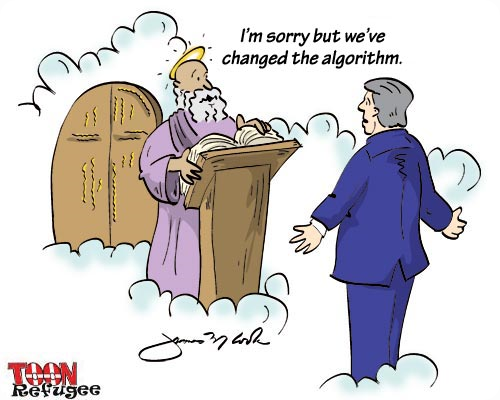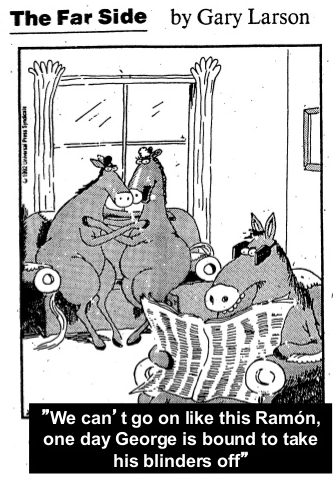 A recent survey I put together asked “If LinkedIn went away tomorrow, what percentage of recruiters would be gone in six months?”
A recent survey I put together asked “If LinkedIn went away tomorrow, what percentage of recruiters would be gone in six months?”
Almost 3 out of 5 recruiters who responded thought that our industry would up and quit if LinkedIn disappeared. No joke. 60% of us think that if LinkedIn were to fail, recruiters would soon follow suit. Yikes.
Before we start clutching our pearls, I’d point out that we used to say the same thing about job boards in the early 2000’s.
It could very well be that we’re just a bunch of Eeyores who don’t respect each other, or maybe the constant pressure of recruiting turns us into cynics in regards to surveys.
But it is a concern, not just for its central position in sourcing, but also because LinkedIn is changing, and I think they are going to fulfill their eventual goal of not being useful to recruiters in any way, shape or form.
Holy Crutchmobile, Batman!

The last publicly posted record of earnings for LinkedIn showed over $2 billion a year in recruiting solutions revenue. LinkedIn Recruiter, Recruiter Lite, and Premium accounts bring in a lot of cash – far more than the advertising or candidate premium subscriptions. By comparison, Sales Navigator is basically a blip.
And then, Microsoft bought them. Now, don’t get me wrong. A $2 billion revenue stream isn’t anything to sniff at, but if anyone is sniffing, it’s Microsoft, which is a $100 billion company.
They didn’t buy LinkedIn to add $500 million in EBITDA. They did it for synergy.

Microsoft is all about enterprise software. Their competitors are IBM, Oracle, SAP… and Google. It’s all about business software and interoperability in the cloud. So. Let’s take a look at Microsoft, whose holdings also include Skype, Dynamics CRM, Cortana, and now, LinkedIn. All rolled together into a nice little Office 365 package. That, my friends, is what’s known as a walled garden, and there is no big beautiful door welcoming you.

The Microsoft strategy of the future, which was pretty was the integration of LinkedIn data with Sharepoint and Outlook. You log in with your Office 365 account, and Microsoft’s servers hands you relevant data. You then pop into Messaging (built to be an IM now instead of email), or Skype and you go about your day {note – a week after I wrote this, it’s pitched at the login of your LinkedIn mobile app).
So.
What would make you think that LinkedIn’s data is going to be accessible to non-Office 365 users in the future? Do you remember Jigsaw? It’s now data.com. You can’t X-ray data.com, but you can purchase a Salesforce account. And how good is that data?
Note that they even though clients enter data into Salesforce, it isn’t available to everyone. That’s because company’s sue each other over sharing data. It’s only us lowly jobseekers that they feel free using for data entry.
LinkedIn remains useful because most people still update their accounts. Yes, some don’t, but anyone thinking that LinkedIn is a wasteland needs to talk to their favorite trainer.
The accounts are there, and accessible (come on people, even MySpace as a graveyard was a great sourcing pool until owner Justin Timberlake (yeah, weird, right?) revamped the site and killed all of the old accounts.

I’d like to reiterate my earlier point that $2 billion in annual revenue is a pretty good chunk of change, so it’s not like LinkedIn is going away tomorrow. Its death is inevitable, but not necessarily imminent. The site’s recent changes reflect a philosophical shift from utility to revenue generation when it comes to recruiting.
It seems the company is determined to squeeze as much money as possible from recruiters while they can. Even they know their window of time is running out. The cash cow might be drying up, but right now the reason LinkedIn is selling more premium accounts is simple: because they can. But recruiters are a notoriously fickle customer base. We worship at the alter of free.
Every talent acquisition leader, agency owner or independent headhunter I talk to wants to know one thing about LinkedIn: how, exactly, they cut their staggering spend on the site. Every. Single. One. The new changes make that difficult. This is obviously by design, but the tension these moves are creating within their customer base signal a long term rift.
You can’t stop the immovable force of recruiting parsimony.

When you look at LinkedIn, it becomes clear that we’re quickly approaching what’s known as a “preference cascade.” That’s a term for when something that seems impossible not only happens, but does so with incredible speed. One day, the Stasi is sill patrolling Checkpoint Charlie. The next day, the Berlin Wall is down and democracy had permanently triumphed over the specter of Russian totalitarianism.
OK, bad example.
How about…one day, you use a taxi. Remember those? The next, it’s been two years since you’ve even thought about taking one, much less actually forked over a fare. Or Blockbuster. When was the last time you rented a DVD or video? Probably about the same time you last grabbed a cab. Thanks to Uber and Netflix, entire industries were displaced overnight.
That’s a preference cascade. Get where I’m going with this?

The day LinkedIn fails to meet the search needs of the average end user is the day the average end user – employer or otherwise – stops updating their account, or worrying about their profile’s accuracy in any way.
“Don’t worry,” the techies tell us. “Machine learning will scrub the data for us, so might as well turn on the firehose.”
Yes, machine learning will help cut through the crap. But an algorithm powered by Watson is quite different than user generated content. The differences are not pedantic. While the historical data we can extract from LinkedIn will definitely have some sort of utility, the fact is that historical data will never be as useful as real updates from real users in real time.
Without user generated content, there’s no need for users to worry about LinkedIn, leading the average user to more or less abandon the site. When you’re a recruiter, profiles and data have a pretty short shelf life. Recruiters go to LinkedIn because that’s a platform where they can generate some sort of response or engagement from candidates or clients.
When LinkedIn transforms from what’s essentially a social network into a data library tied to your Office 365 account, they will inevitably lose their greatest asset: the perception of immediacy most professionals now associate with LinkedIn. We care about keeping our information current, because we know people are looking.
When people stop looking at our profiles on LinkedIn, when our content stops getting views or we stop being able to find the candidates we’re looking for, then the site stops working as intended and becomes just another database of stale resumes, more or less. The average enterprise already has access to enough of those as it is.

Man, come to think of it, maybe that 2020 prediction is a little too conservative. I should probably push that up a year or two. But you probably already think I’m crazy for predicting a preference cascade.
It’s OK. We’ll see who’s crazy when 3 out of 5 of you pack up your bags and leave the industry for good once LinkedIn stops working – and you have to start. Recruiters will survive, of course. Sure, automation will have a bigger impact than before, but it’s never going to displace the human touch.
It’s never too late to start planning for life after LinkedIn. What that post-apocalyptic recruiting landscape looks like is another story entirely, but it’s time to remember that while machine learning is the future, we’ve learned a few things about machines ourselves.
And if there’s one lesson we all learned early on from the worldwide web, it’s that if you don’t own and manage your data, you’re at the mercy of those who manage it for you.
And you better hope that those people who own your data have your best interests at heart. But don’t hold your breath. This is LinkedIn we’re talking about.
There’s no reason for them to start now.
By Jim Durbin
Jim Durbin is managing principal at Texas-based Brandstorming, which describes itself as ":equal parts full-service digital agency, training company and recruiting firm." He's known as a Social Media Headhunter, because he places high level marketing managers and because he's trained over 9,000 recruiters and salespeople on digital tools. Follow with him on Twitter or connect with him on LinkedIn.
Recruit Smarter
Weekly news and industry insights delivered straight to your inbox.





